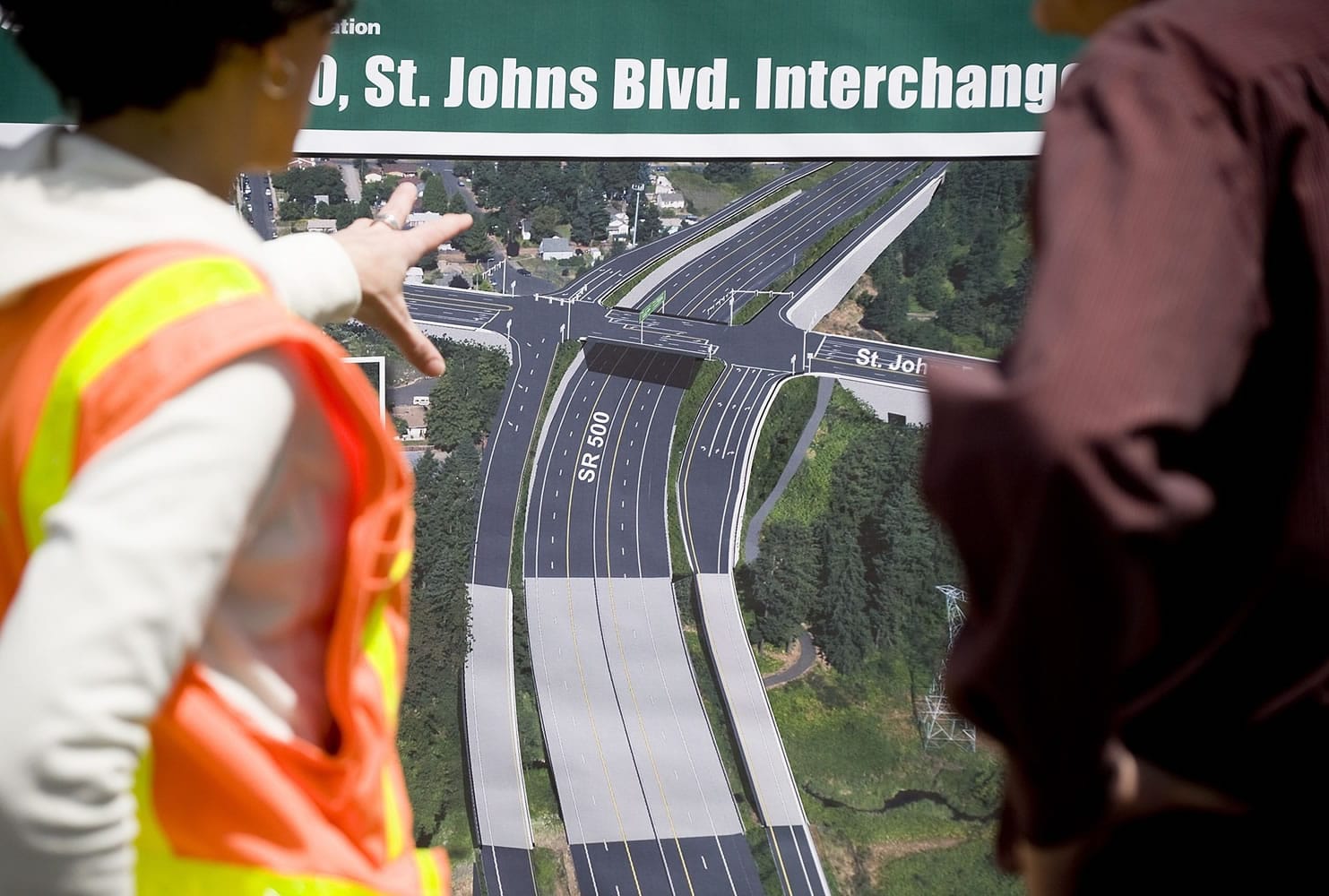The Washington State Department of Transportation took another step toward removing traffic signals from state Highway 500 on Tuesday when it broke ground on a $49 million interchange at St. Johns Boulevard.
There’s an average of a crash a week at the intersection in its current configuration because cars traveling at highway speeds have to stop at a traffic light.
“I can hear the accidents that happen all the time,” said Sundra O’Connell, who lives in the neighborhood and attended Tuesday’s ceremony.
State Highway 500, originally conceived in the 1960s, now carries about 65,000 cars a day, making it the busiest secondary highway in Clark County, said Don Wagner, Washington State Department of Transportation regional administrator.
“It’s not a podunk little two-lane roadway,” Wagner said. “If we don’t do something, we’ll end up with traffic stacked up to I-5 in one direction, and to Falk or Stapleton in the other. And if you’re on St. Johns, good luck.”
Projects added interchanges at Northeast 112th Avenue in 2005, Thurston Way in 2002, and Andresen Road in 1996. The state plans to convert two more signaled intersections to interchanges — those at Falk and Stapleton roads — but “they’re not quite funded yet,” Wagner said.
Wagner, along with Vancouver’s mayor and city council members, and aides to state and federal politicians, used shiny new shovels to turn trucked-in dirt at Tuesday’s ceremony off Y Street near the fated intersection.
The state awarded a $27.2 million construction contract to Tapani Underground Inc. of Battle Ground in April. The low bid — 18 percent lower than estimates — dropped the project total from $57 million to $49 million. A combination of state and federal money will pay for the project.
Preliminary design work on the St. Johns interchange began in 1999, but stopped in 2002 due to lack of funding. Work resumed in 2006 after the state Legislature approved the project. The price includes the costs of design, engineering and right-of-way acquisition in addition to the actual construction costs.
Both Highway 500 and St. Johns Boulevard will remain open for the most part during construction, expected to be completed in 2013. Work will require occasional short-term weekend and nighttime closures, as well as lane closures, turn restrictions and reduced speeds.
Although the contractor may tweak the timeline along the way, the state transportation department has outlined the project in four stages:
o In the first stage of construction this year, crews will build a temporary detour, or shoo-fly route, along St. Johns. Drivers can expect minor nighttime delays. Also, a portion of the Burnt Bridge Creek/Discovery Trail system will be closed for realignment.
o In the second stage, beginning this winter and continuing through summer 2012, traffic on St. Johns will shift to the shoo-fly route. Crews will build the new bridge over Highway 500 and begin constructing new interchange ramps. The speed limit on Highway 500 will be reduced to 45 mph, with left and right turns prohibited at St. Johns. On St. Johns, the speed limit will be reduced to 25 mph, traffic will be reduced to two lanes, and left turns at Highway 500 will be prohibited.
o In the third stage, from fall 2012 to winter 2013, traffic on St. Johns will shift to the new bridge over Highway 500. The interchange ramps on the east side of St. Johns will be open to traffic. Crews will complete construction work on the ramps on the west side of St. Johns. The speed limit on St. Johns will be 25 mph and traffic will be reduced to two lanes there.
o During the final stage, in spring 2013, crews will wrap up construction and complete landscaping, with only minor nighttime traffic delays.
Drivers should use caution during construction, said Capt. Ron Rupke of the Washington State Patrol.
“Please watch the warning signs,” Rupke said. “Please slow down. Please stay off your cellphones. The lives of the workers on this project hang in the balance.”



